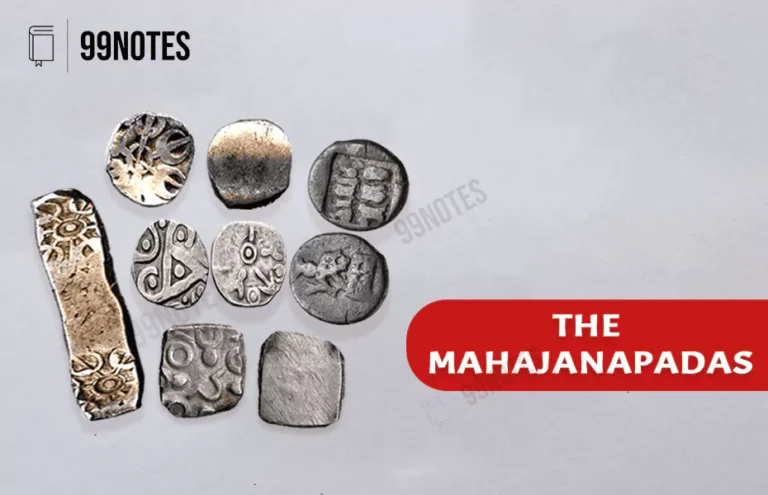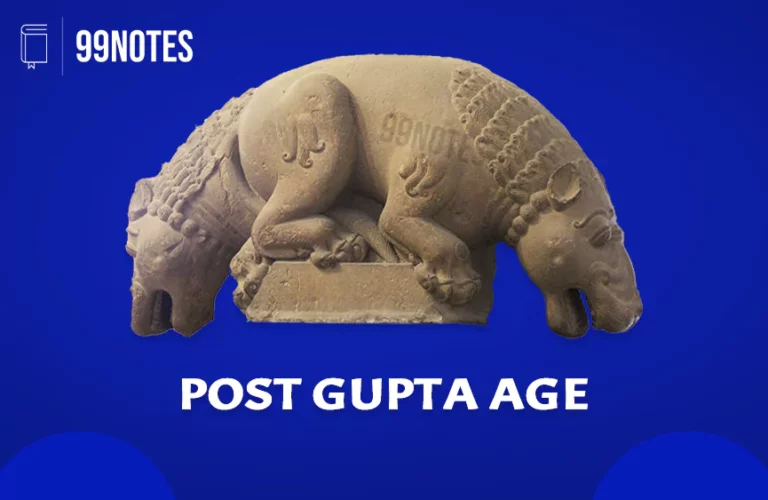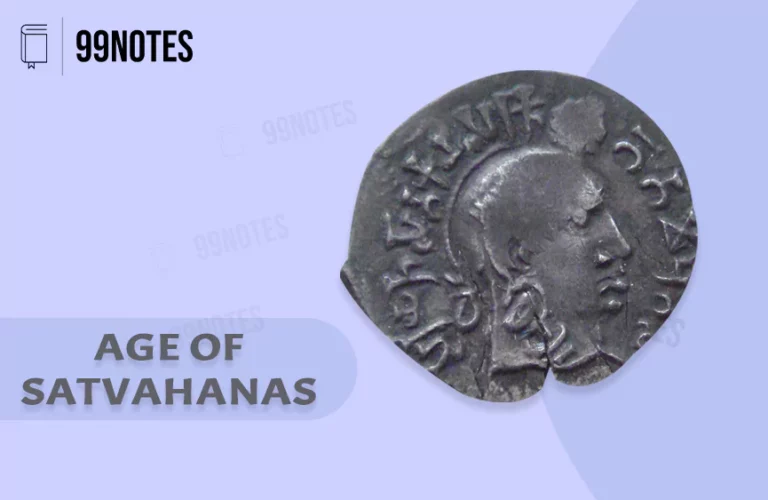Sangam Age: Literature, Map, & Dynasties [UPSC Exam Notes]
Sangam Age
The Sangam Age, a significant era in ancient Tamil history, is renowned for its rich cultural and literary achievements. The period approximately between the 3rd century B.C. and 3rd century A.D. in South India (the region lying south of river Krishna and Tungabhadra) is known as Sangam Age/Period. This period, marked by the gathering of poets and scholars at the court of the Tamil kings, produced an extensive body of literature that sheds light on the social, economic, and political life of the time.
![Sangam Age: Literature, Map, &Amp; Dynasties [Upsc Exam Notes] | Updated July 27, 2024 Sangam Age/Period: The Early History Of South India](https://99notes.in/wp-content/uploads/2022/10/image9-1024x658.jpg)
The Sangam Age is named after the Sangam Assemblies of Poets and academicians who met regularly in Madurai in this age. Their compositions are together known as Sangam Literature. It flourished under the royal patronage of the Pandya monarchs of Madurai.
The Three Sangams
- The Sangam literature is composed of the earliest examples of Dravidian literature.
- Eminent scholars gathered at the Sangams to serve as the board of censors, and the best literature was compiled in the form of anthologies.
- Sangam Literature is based on two main themes – love / akam(or aham) and heroism/ praise of Kings and their deeds/ puram.
- There were 3 Sangams (Assemblies) held in historic South India known as Muchchangam, according to Tamil legends:
| Sangam | Location | Features |
| First Sangam | Madurai | Believed to be attended by legendary sages and Gods.No literary work of this Sangam is available. |
| Second Sangam | Kapadapuram | Tolkappiyam is the only surviving academic work from the second Sangam. |
| Third Sangam | Madurai | Several Tamil literary works have survivedThe history of the Sangam era can be reconstructed using these sources. |
Sangam Literature
The primary Sangam literature is organised into Narrative and Didactic texts.
|
|
Literature |
Themes and Features |
|
Early Sangam Literature |
Tolkappiyam by Tolkappiyar |
● It is a text on Tamil grammar but also gives an idea about political and socio-economic conditions. |
|
Narrative Text (18 Major Works) |
Ettutogoi (Eight anthologies) by Several poets |
● It praises the love and heroism of Kings and their actions. ● It throws light on Tamil society. |
|
Pattuppattu (Ten long poems) by Several poets |
||
|
Didactic Text |
Pathinenkil-kanakku (Eighteen lesser works) by Several authors |
● Tirukkural, authored by Thiruvalluvar, is the most famous work on Ethics. |
|
Two Epics |
Silappathikaram by Ilango Adigal |
● Throws light on Sangam society and polity |
|
Manimegalai by Sittalai Sattanar |
- Thirukkural, written by the saint poet Thiruvalluvar, is one of the most celebrated works in Sangam literature. It deals with ethics and morals.
- The theme of Silappathikaram is about a woman’s devotion to her spouse despite his love affair with a courtesan named Madhavi. The heroine Kannagi (wife of Kovalan) is treated as an ideal wife.
- ‘Manimegalai’ is a story about the adventures of the daughter of Kovalan and Madhavi, named Manimekalai. It teaches the dharma to the Chola king through the character of Manimekalai, a Buddhist nun. In the story, the Chola queen attains nirvana in the Kannagi temple.
![Sangam Age: Literature, Map, &Amp; Dynasties [Upsc Exam Notes] | Updated July 27, 2024 A 19Th Century Copy Of Tirumurukarruppatai- A Sangam Age Text](https://99notes.in/wp-content/uploads/2022/10/image8-1024x388.jpg)
Other Sources of Sangam Age
- Greek authors like Strabo, Ptolemy, Megasthenes, and Pliny have mentioned that West and South India had commercial trading contacts.
- The Chera, Chola, and Pandya kings who ruled the region south of the Mauryan empire were recorded in the Ashokan inscriptions of Major Rock Edicts of II and XIII.
- Tamil kingdoms are mentioned in the Kharavela Hathigumpha inscription from the 1st century BCE in Kalinga.
Sangam Dynasty
The Sangam literature mentions three dynasties that ruled south India: Cheras, Cholas and Pandyas. They fought amongst themselves. However, they shared similar culture and society, with scholars moving freely from one kingdom to another.
![Sangam Age: Literature, Map, &Amp; Dynasties [Upsc Exam Notes] | Updated July 27, 2024 Location Of Three Kingdoms Mentioned In Sangam Age Map](https://99notes.in/wp-content/uploads/2022/10/image7-1.jpg)
1. The Cheras
- Location of control – The Cheras ruled the Kongu region of Tamil Nadu and central and northern parts of Kerala.
| Capital | Vanji/Karur |
| Ports | Musiri and Tondi of the west coast. |
| Emblem | “bow and arrow”. |
Other Archaeological finds about Cheras –
- Three generations of Chera rulers are referenced in the Pugalur inscription of the 1st century A.D.
- Trade with the Romans contributed to the Cheras’ prominence.
- They constructed an Augustus temple at Musiri port, close to Cochin, India.
Senguttuvan, also called the Red Chera or the Good Chera, reigned during the 2nd century A.D. He is mentioned in Pattuppattu.
- His military prowess is detailed in the epic Silapathikaram, which also includes information on his voyage to the Himalayas, where he destroyed numerous north Indian kings.
- He introduced the worship of Kannagi (Wife of Kannai) as the ideal wife in Tamil Nadu, also called the Pattini cult.
- He was the first king to send an embassy to China from South India.
2. Cholas
- Location of control – The Cholas ruled over the central and northern parts of Tamil Nadu in the Cauvery plains. The Kaveri delta, subsequently known as Cholamandalam, served as their primary area of rule.
| Capital | Uraiyur (near Tiruchirapalli). |
| Ports | Kaviripattinam served as a chief port town. It served as an alternative royal residence too. |
| Emblem | Tiger |
- KingKarikala was a famous Chola king in the Sangam Age. Pattinappalai (one of the ten songs of Pattapattu) depicts his life and military conquests.
- The Battle of Venni is mentioned in many Sangam poems in which Karikala defeated the confederacy of Cheras, Pandyas and eleven minor chieftains. He also won the Battle of Vahaipparandalai against nine enemy chieftains. Eventually, he became the overlord of the whole Tamil region.
- He built Kallanai Dam across the Kaveri River by employing Sinhalese kingdom (Sri Lanka) war Prisoners.
- During his reign, trade and commerce flourished. Karikala found the port city of Puhar (near today’s Kaveripattinam).
- They maintained an efficient navy.
3. Pandyas
- Location of control – Pandyas ruled the southern part of the present-day state of Tamil Nadu, in an area centred around their capital Madurai.
| Capital | Madurai |
| Ports | Korkai is located on the Thampraparani river. It was well-known for its conch (chank) diving and pearl fishing. |
| Emblem | Fish |
- Pandyas patronised Tamil Sangams. They promoted the compilation of the Sangam poems.
- KingNenduchelian(or Nendujeliyan) was a famous Pandyan king.
- They had a regular army. Nenduchelian defeated Chera, Chola and Anuradhapura (a kingdom of Sri Lanka).
- They had a flourishing trade, and their pearls were famous.
- In the novel Silapaddikaram, King Nenducheliyan accused Kannagi’s husband of theft.
- Their power faded with the invasion of a tribe called the Kalabhras.
- They lost their significance a century after the Sangam Age and again rose in the 7th century.
Sangam Polity and Administration
Central administration
Form of Government – hereditary monarchy.
- Every Sangam dynasty had a unique royal emblem.
- A vast body of officials assisted the king. It was categorized into five councils, namely-
| Terms | Officials |
| Amaichar | ministers |
| Anthanar | priests |
| Thuthar | envoys |
| Senapathi | military commanders |
| Orrar | spies |
- Each regular had a highly efficient regular army(not a feudal system).
- They filled the royal treasury majorly with the booty captured in wars.
| Sangam Name | Officials |
| Varasan | Kings |
| Illavarasan | Crown prince |
| Avai | Assembly |
| Amaichar Avai | Council of ministers |
| Allaikarar | King’s Guard |
- Land revenue was the primary source of the state’s income.
- Custom duty was imposed on foreign trade.
- The roads and highways were well guarded and maintained to prevent robbery and smuggling.
Provincial administration
![Sangam Age: Literature, Map, &Amp; Dynasties [Upsc Exam Notes] | Updated July 27, 2024 Provincial Administration During Sangem Age](https://99notes.in/wp-content/uploads/2022/10/provisional-adminstration.jpg)
Features of a Nadu
- It was similar to a district.
- Rich peasants controlled it. Some peasants served three kings and were called
- Nadu also had a chief called Araiyar, and they were also rich peasants.
- Kings gave both these titles as a mark of respect.
Governance through Committees
- We find two types of assemblies in the Sangam Age, Sabha and Ur.
- Sabha was a Brahman village assembly, and Ur was a village general assembly consisting of non-brahmans. We don’t know much about Ur, but a lot has been written about Sabhas in the literature.
Sangam Age Society
- Tolkappiyam refers to four castes by their occupation.
| Caste | Occupation |
| Arasar | ruling Class |
| Anthanar | priest |
| Vanigar | carried on trade and commerce |
| Vellalar | agriculturists |
- Ancient primitive tribes like Vedars, Nagas, Irulas and Thodas lived in this period.
- Tolkappiyam mentions the five-fold division of lands and the people inhabiting the area, which are–
[table id=22 /]
Position of Women in Sangam Age
- Women were allowed intellectual pursuits and were respected. There were women poets like Avvaiyar(who wrote one of 18 minor works of Sangam literature – Attichollai), Nachchellaiyar, and Kakkaipadiniyar, who flourished and contributed to Tamil literature.
- Women could choose their life partners. However, the life of widows was miserable.
- The practice of Sati is also mentioned as being common among the upper classes of society.
- Adultery and bigamy were a crime.
Religion
- Murugan, revered as the Tamil God, served as the main god during this era. He was honoured with six abodes known as Arupadai Veedu.
- Other gods worshipped were Mayon (Vishnu), Vendan (Indira), Varunan and Korravai.
- The Hero Stone, also known as Nadu Kal worship, was prominent during the Sangam period and was built as a monument to the warriors’ courage while engaged in combat.
- They patronised Brahmin priests and adopted the Vedic religion of sacrifice.
The economy of the Sangam Age
- Agriculture was the primary industry throughout the Sangam Age. Rice was the most widely grown crop.
- The handicrafts included weaving, carpentry, metalworking, shipbuilding, and the creation of jewellery out of ivory, stones, and beads. These were in high demand during the Sangam era when domestic and international trade peaked.
- Cotton clothes woven at Uraiyur were in great demand in the western world.
- The tax was known as Vari.
Trade and Transport in Sangam Age
- Due to the arrival of large ships carrying valuable products, the port city of Puhar developed into a significant hub for international trade.
- Tondi, Musiri, Korkai, Arikkamedu, and Marakkanam were additional large ports with significant commercial activity. Numerous gold and silver coins produced by Roman emperors such as Augustus, Tiberius, and Nero have been discovered around Tamil Nadu, showing a thriving economy.
- Major exports were cotton textiles, spices including pepper, ginger, cardamom, cinnamon and turmeric and goods made with ivory, pearls and precious stones.
- Horses, gold, and sweet wine were a few of the imported items.
![Sangam Age: Literature, Map, &Amp; Dynasties [Upsc Exam Notes] | Updated July 27, 2024 Roman Coins Found In Tamil Nadu Of Sangam Age](https://99notes.in/wp-content/uploads/2022/10/image10-1024x430.jpg)
End of Sangam Age
- The Sangam age gradually came to an end by the third century A.D.
- Between 300 and 600AD, the Kalabhras ruled the Tamil nation following the Sangam period.
- Initially, Historians inaccurately referred to this age as a “dark age”, as little was known about its history. However, now we know about the emergence of several powerful kingdoms such as Pallavas and Chalukya after the Sangam Age.
Recent excavations related to the Sangam Age
Keezhadi/Keeladi village (Madurai, Tamil Nadu)
- It is found on River Vagai.
- Some crucial finds are artefacts dating back to 580 BCE, some with graffiti marks like those believed to have originated from the Indus script.
- It might mean that the Sangam Age is older than previously thought.
- Artefacts foundhere:
- Pots and potsherds with Tamil Brahmi script,
- Skeletal remains of animals, including that of a bull with a hump,
- Major metal works include Gold ornaments and iron nails.
- Spindles for weaving and a comb made of ivory besides sharp weapons made of bones
- None of the more than 15,000 artefacts discovered there so far is religious.
- Buildings: Construction of the homes on these sites includes roof tiles and bricks, proper drainage systems and wells with terracotta rings, all of which point to a sophisticated way of life.
Thamirabarani/Porunai civilisation (Thoothukudi, Tamil Nadu)
- It is found on the River – Thamirabarani Tamraparni or Porunai River (the shortest river in the state of Tamil Nadu).
- Significance of the discovery
- A burial urn with rice and soil has been carbon-dated back to 1155BCE.
- The Porunai or Thamirabarani river is mentioned several times in Sangam literature.
Also Read: Megaliths
Explore additional significant articles on Ancient Indian History listed in the table below:
| Stone Age | Harappan Civilisation |
| Vedic Period | The Mahajanapadas |
| Age of Satvahanas | Understanding Mauryan Society |
| The Gupta Empire | Indian During Its Golden Age |

![Sangam Age: Literature, Map, &Amp; Dynasties [Upsc Exam Notes] | Updated July 27, 2024 Megalith And Sangam Age](https://99notes.in/wp-content/uploads/2023/04/megalith-sangam-age-99notes-upsc.webp)



![Post Mauryan Period: Shunga, Kanva Dynasties &Amp; More [Upsc Notes] | Updated July 27, 2024 Post Mauryan Period: Shunga, Kanva Dynasties & More [Upsc Notes]](https://99notes.in/wp-content/uploads/2023/04/post-mauryan-age-99notes-upsc-1-768x495.webp)

